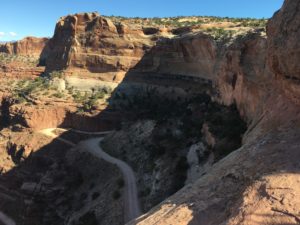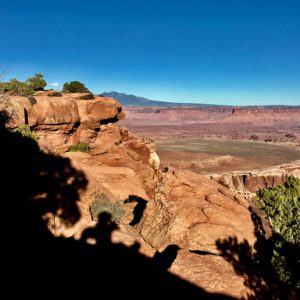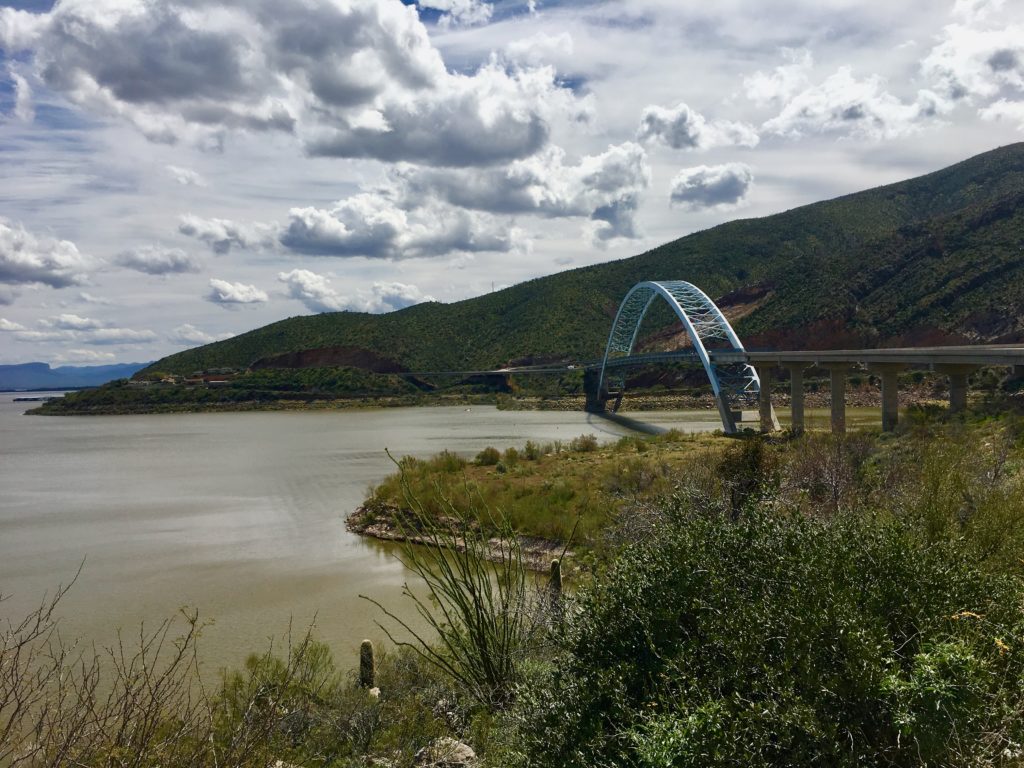
Tonto Basin National Forest is home to gorgeous Roosevelt Lake in the Sonoran Desert in central Arizona. It is in my top five-boondocking areas in the western United States because of the spectacular biodiversity, natural beauty, and collaborative management of the area that is respectful of the land and people. There is something for every type of recreational user.
Spring is Show Time in the Desert
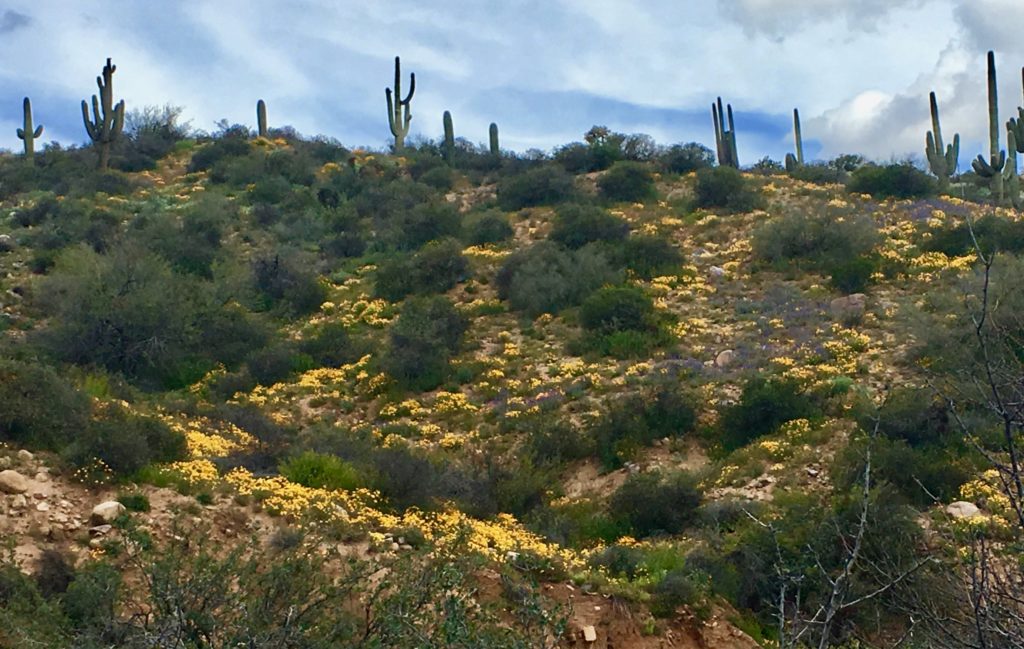
February, March, and April the Sonoran Desert springs to life. Hills and canyon walls are carpeted with bright yellow California poppies and soothing purple lupines. Saguaro cacti tower over cholla, prickly pear, agave, and jojoba. Higher up oak, juniper, pinion, and ponderosa create a lush landscape.
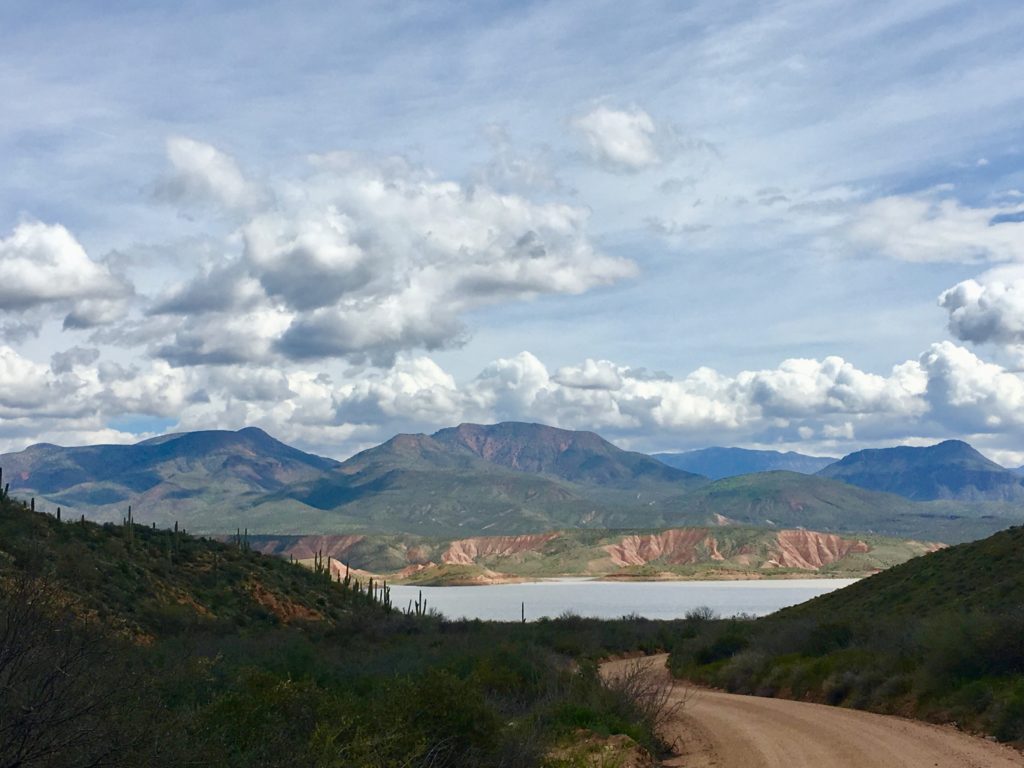
Tonto Basin encompasses 300 miles of big sky and dramatic mountain ranges surrounding a placid lake in wilderness areas where hiking and horseback are the only mode of transportation. Peaceful, primitive, and developed camping sites offer inspiring views and miles of hiking for every level.
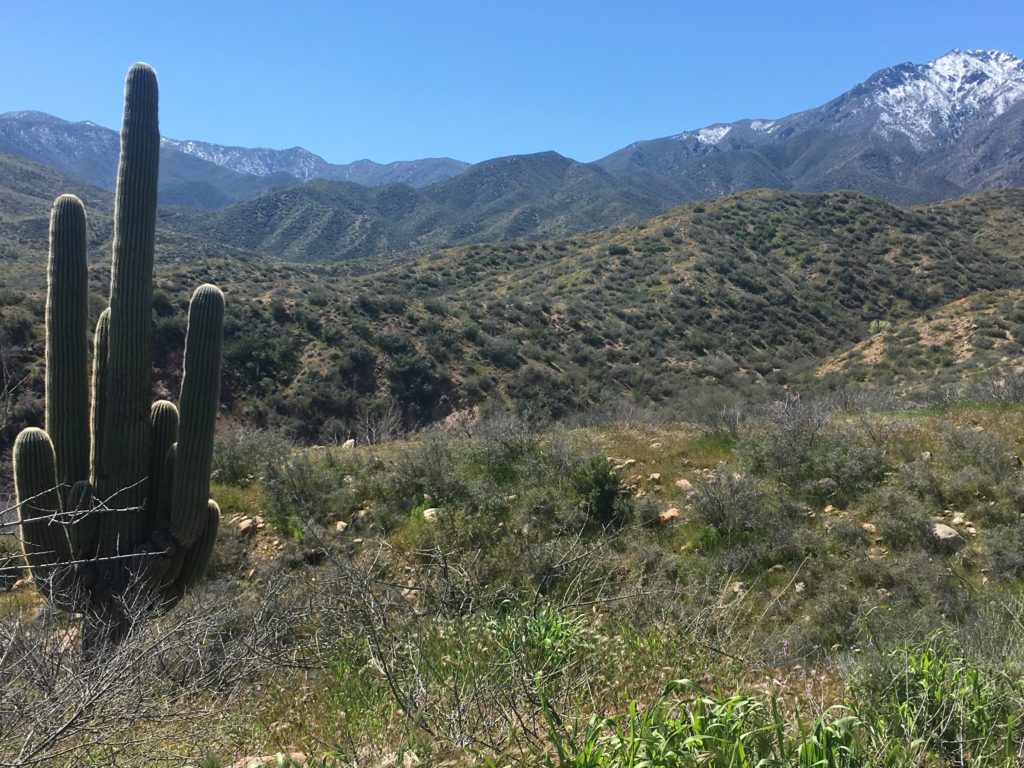
From Ancient Cliff Dwellings to Modern Dam Engineering
This area has been home to people since prehistoric hunter-gatherer nomads. Between 100-600 the Salado people built cliff dwellings in a more settled farming life. For unknown reasons they disappeared, leaving no evidence of human activity in the basin for 150 years.
Hohokam farmers settled in 750 growing to a peak in the 1100’s. Catastrophic flooding of the Salt River forced migration in the 1300’s-1400’s but the area remained Apache land until forced evacuation by the US army in the mid- to late-1800’s.
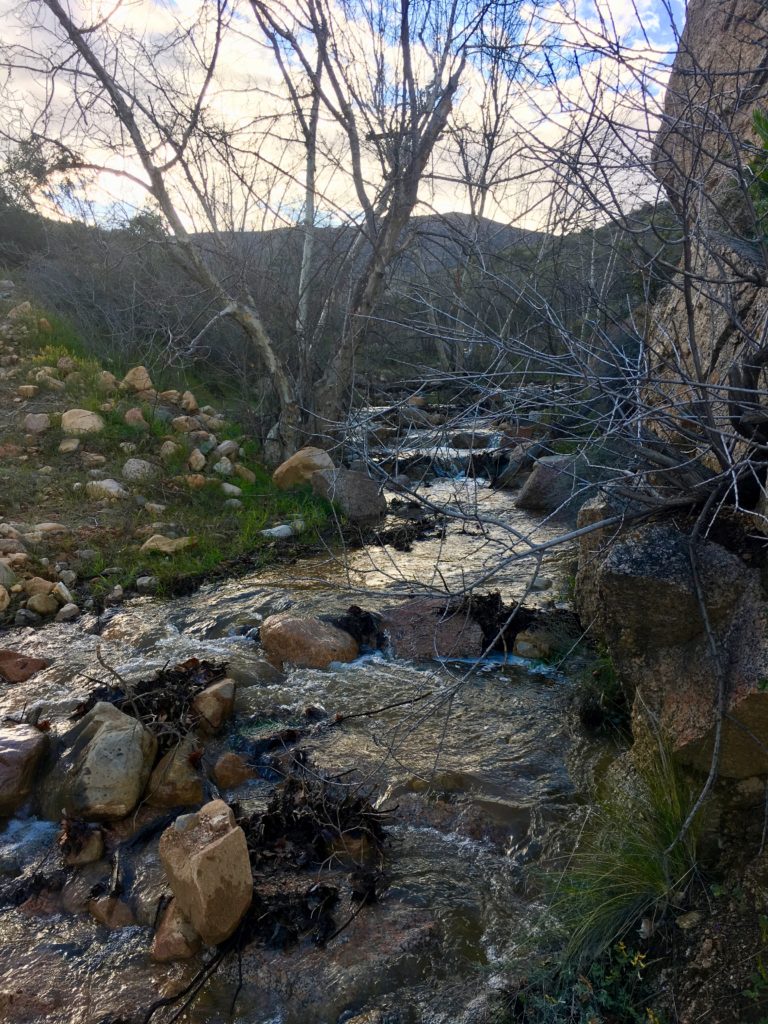
The native wisdom of a lifestyle integrated in nature seems to seep from the ground and swirl in the breeze. Perspective on your own blink of life clarifies in a land where many tribes and civilizations have flourished and vanished.
There is a deep, grounded peace that nurtures an expansive, open awareness and curiosity. Problems I wrestled myself into knots over like unpredictable weather suddenly unraveled, revealing ample possibilities and easy acceptance.
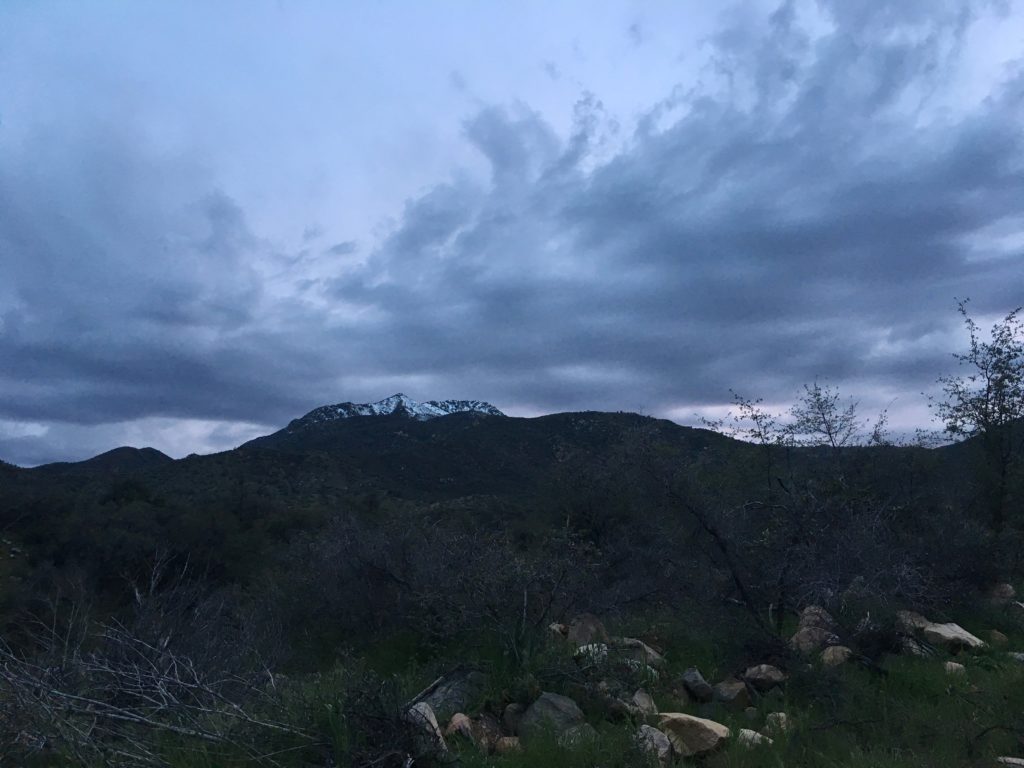
My Best Forest Service Management Experience
In true national forest service
Camping Options for All
It is possible to get far enough from civilization’s noise to truly reset and restore the mind, body, and spirit. Or select a different area to suit up, strap on and conquer the canyons on motorbikes. Take an ATV scenic drive to vistas not accessible by highway vehicles. Roosevelt Lake has something for everyone.

Full information at Tonto Basin Forest Service Website
The forest service maintains a great website for information about all camping options, including dispersed camping, a.k.a. boondocking.
Boondocking
Boondockers like me who have small, off road rigs can primitive camp free along canyon and ridge forest and fire roads as well as at Salt River rafting take out points. Dispersed camping sites for vehicles are larger than most and strategically located to offer breath-taking distant vistas or shelter in trees by water.
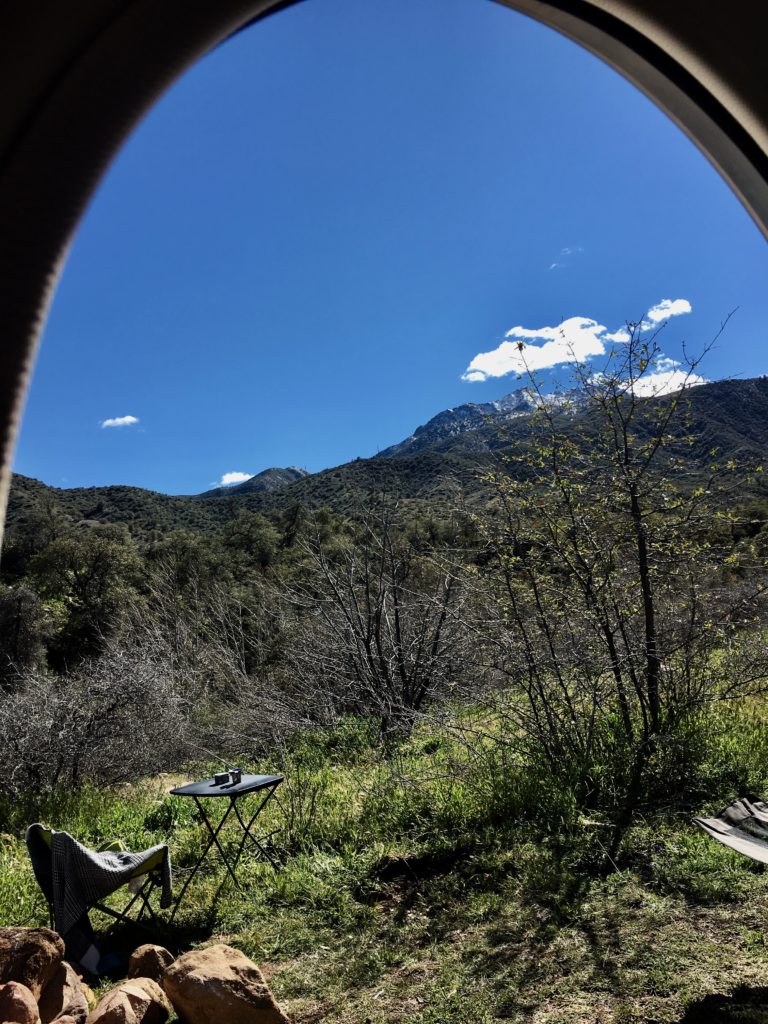
Backpacking
Backpackers have two amazing wilderness units to choose from: Superstition and Four Peaks Wilderness.
Developed Camping
Tonto Basin’s nine campgrounds, each with multiple loops, are still operated by the forest service and the attention to detail and service, as well as maintenance and upkeep of facilities are spectacular.
Rather than jumble all together, there are separate areas for tent campers, smaller units like mine, and larger RV’s. Generator hours are limited. Two of the campgrounds have showers, Windy Hill and Cholula Bay. All have access to shared water spigots and flushing toilets. None have individual water and electric hook ups.
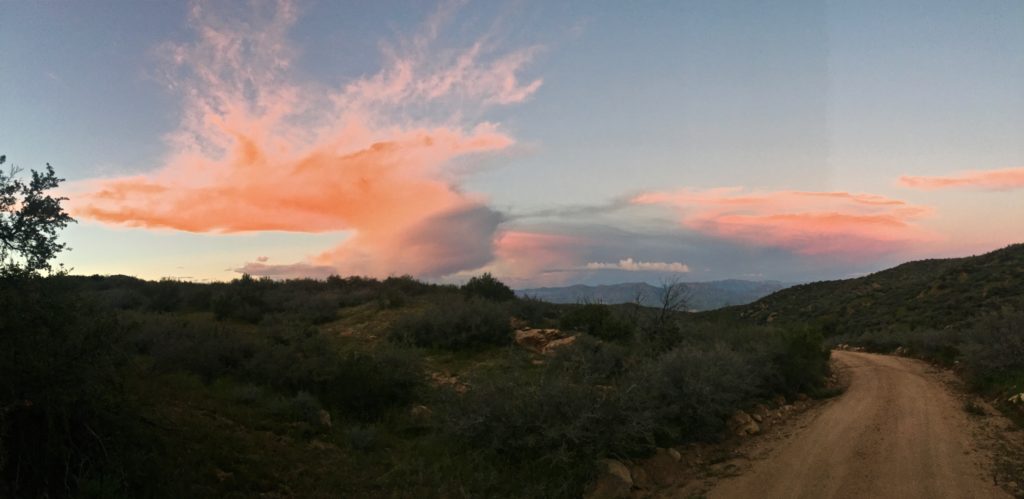
My Favorite Boondocking Site – So Far
After the first mile off the highway on dirt road, you’ll need a higher clearance vehicle with at least all-wheel drive, like a Subaru, due to water crossings, rutting, and uneven road.
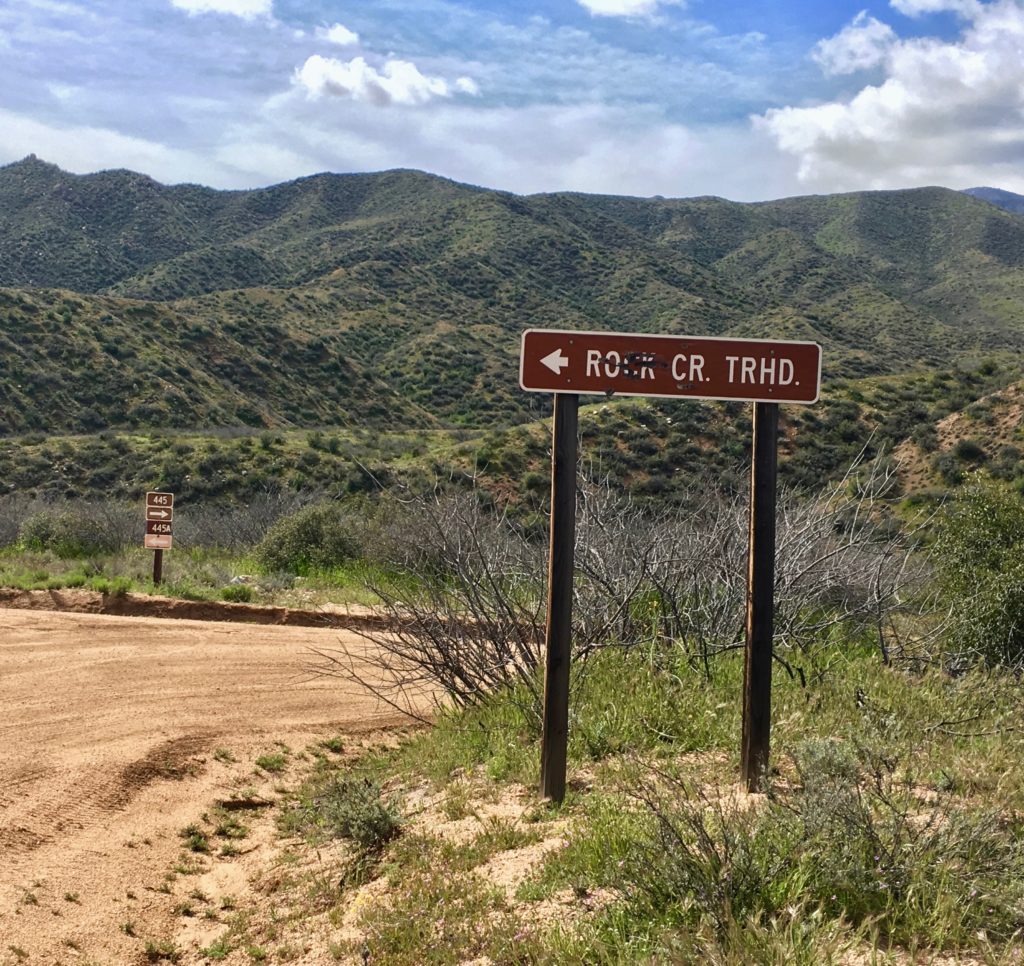
Travel north on state highway 188 from the Tonto Basin National Forest Ranger District Headquarters and Visitors Center. At Bermuda Flat Campground turn west on 3-Bar Road (Forest Road 445). Dispersed camping sites begin close to the intersection of HW 188 and FR 445 and are dotted along 14 miles of road that dead end in a bottomland of oak, birch, and cottonwood trees.
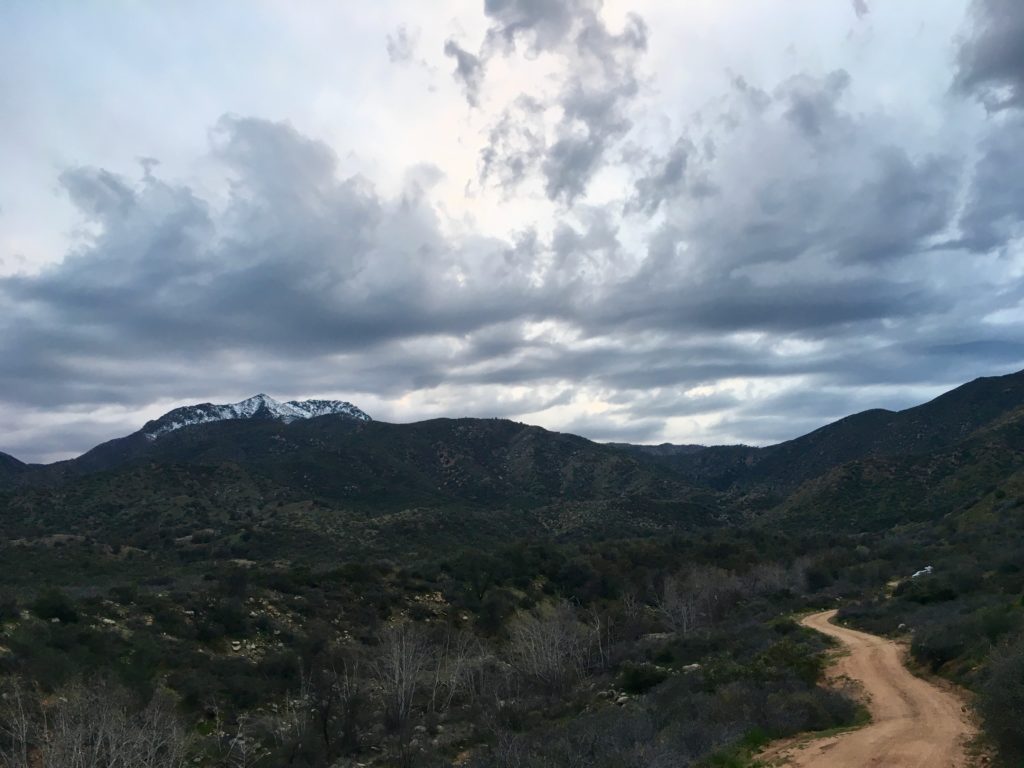
This is where Four Peaks Wilderness area begins with trailhead access to the Oak Flat and Lone Pine Trails. FR 445 provides limited motorized vehicle access to set up base camp. From here, miles of hiking- and horseback-only trails in protected wilderness provide for all skill levels.
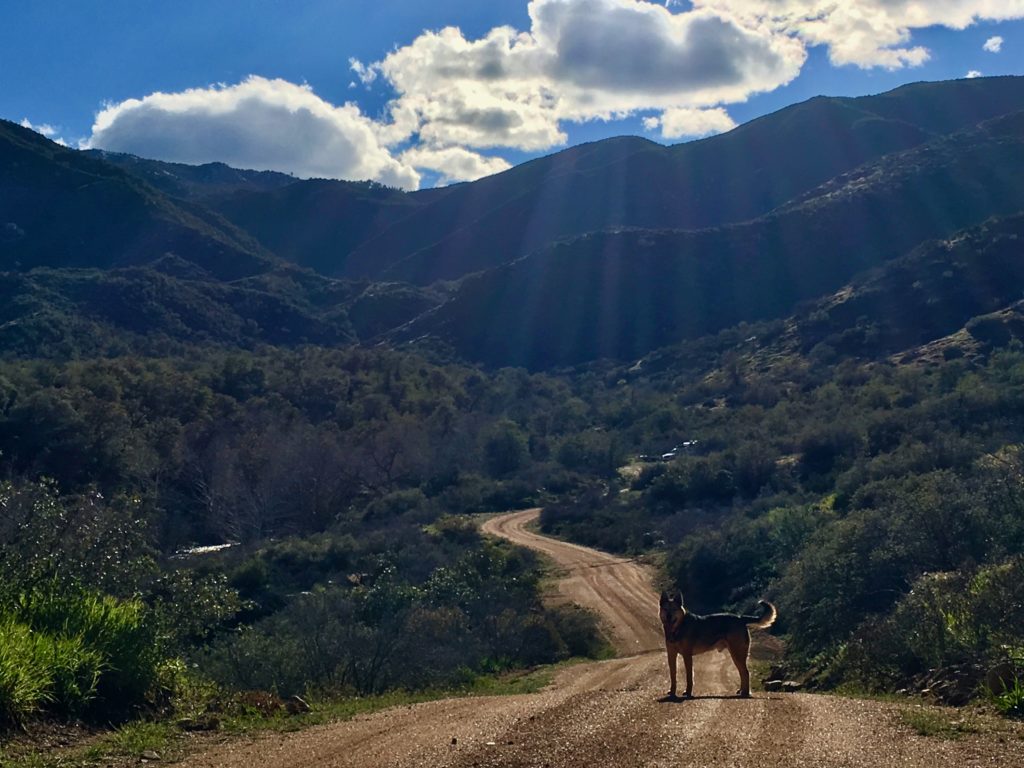
I set up camp on the ridge above Rock Creek because of the awesome vistas at top and easy access to the lower creek trail lined with trees and home to abundant wildlife. Bird viewing is supreme. Simple cross Rock Creek and go over another ridge to Oak Flat for wilderness trail access.
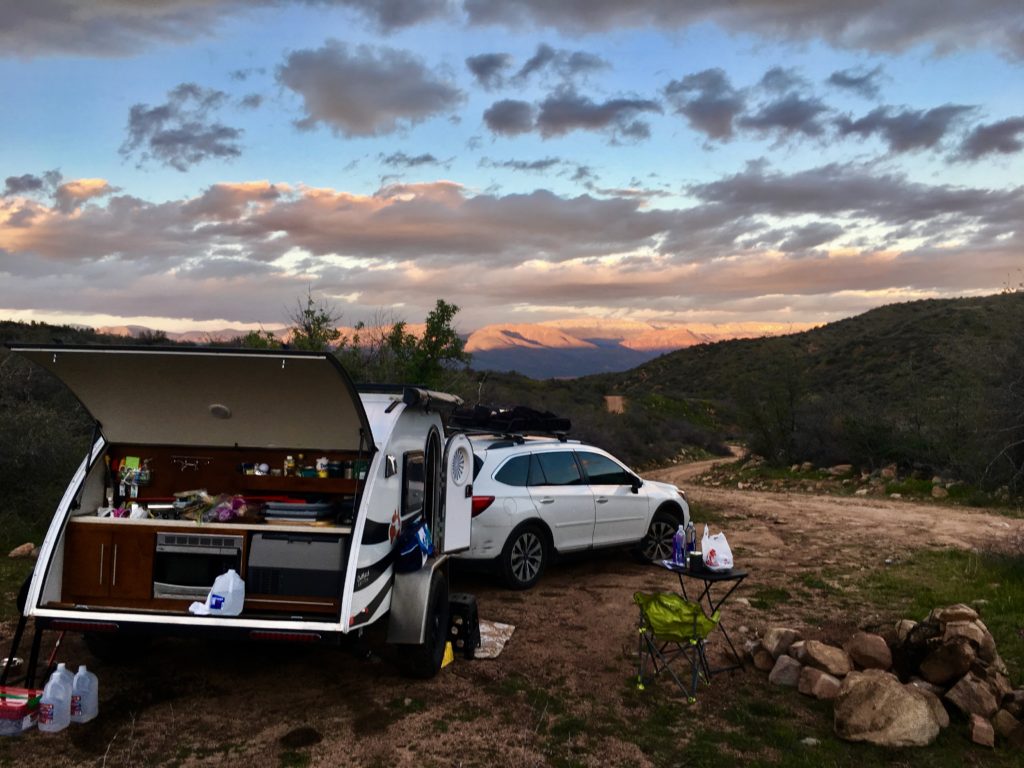
An Unexpected Surprise
Most surprising and appreciated was the cooperation and collaboration evident between so many local, county, state, and national governments. The list is longer than most. While each maintains its own philosophy and approach there was not the sense of rigid territory, but rather many partnerships to insure the daily and long-term future of the Tonto Basin.
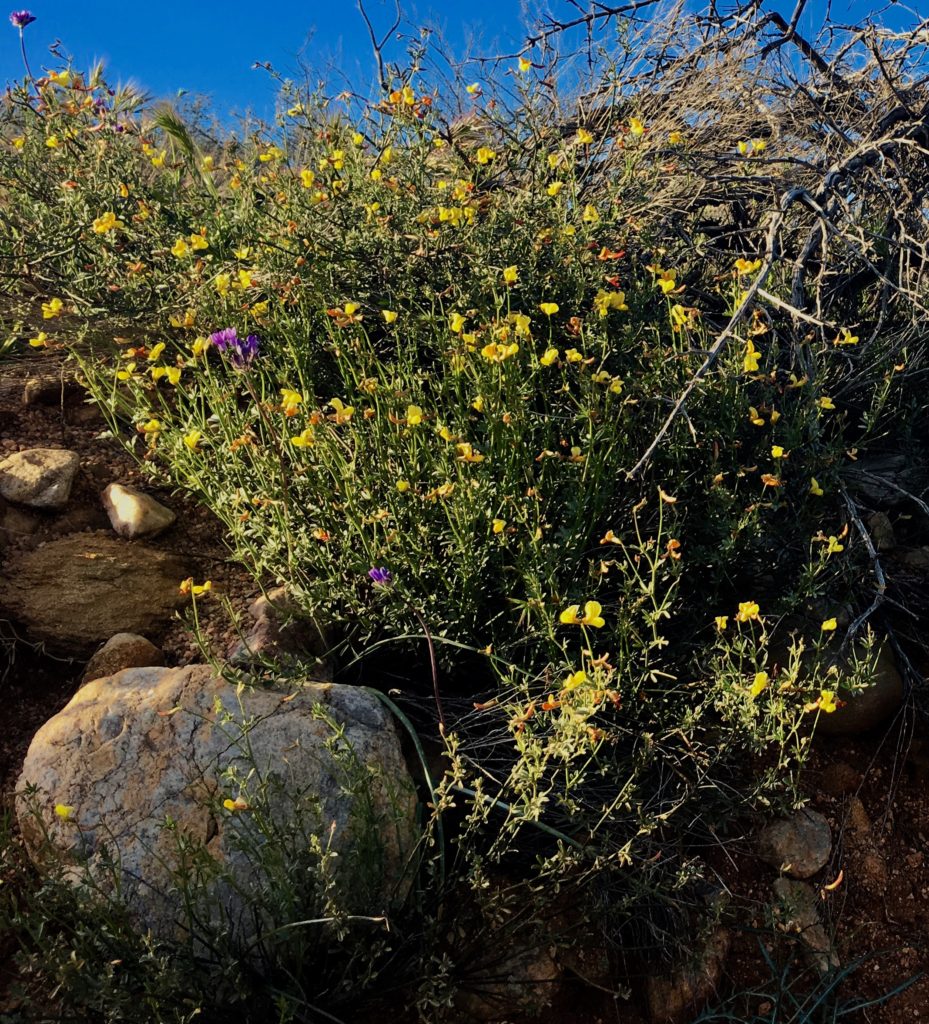
There is a pride of place and service permeating the work culture. Employees tend to be long-term veterans, passionate, knowledgeable, and accessible. Volunteers are ample and evident. Every day I met someone working in the wilderness that shared valuable information unique to the area.
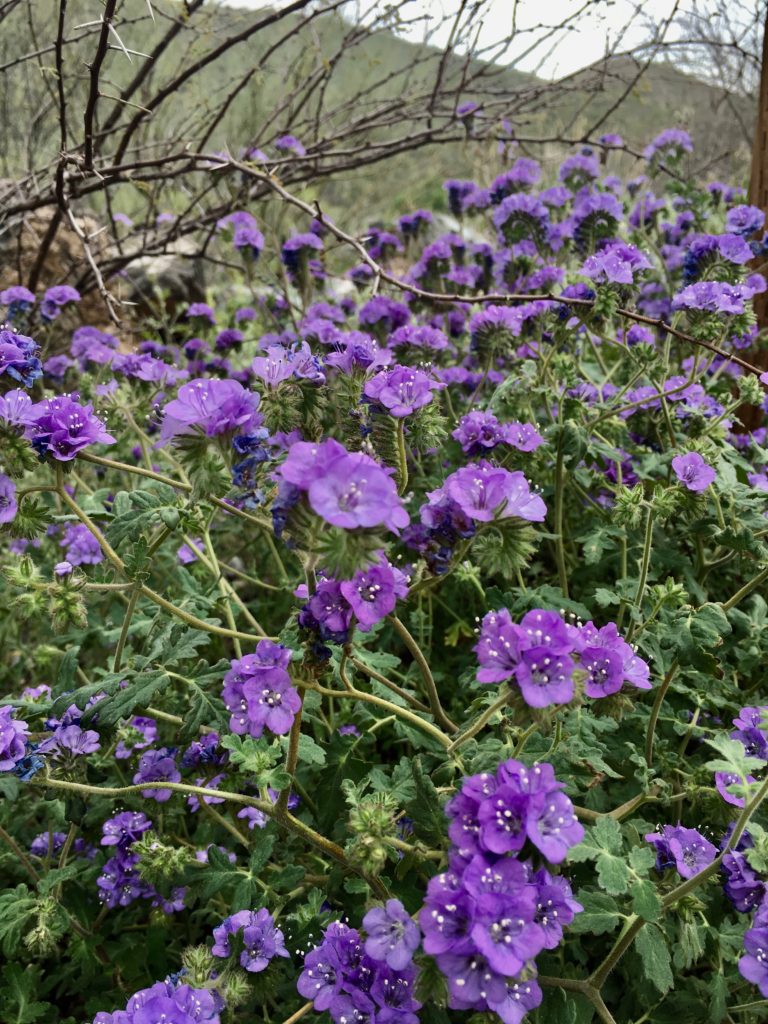
I’ve never had this experience in my boondocking adventures and it was rare in my professional work with nonprofit organizations. Perhaps it is also tied to the energy of this area I experienced that promotes a foundation of grounded peace and open awareness.
You Get What You Pay For
It’s also about the bottom line goal: public tax dollars vs. private profit. Tonto Basin is the largest campground operated by the federal, publically funded national forest service instead of contracted, corporate-owned concessionaires. The difference is quite apparent.
The federally funded forest service is driven by service to the public and protection of natural resources by employees of the public. This is a very different mission than profit for a private corporation.
Fees and Passes
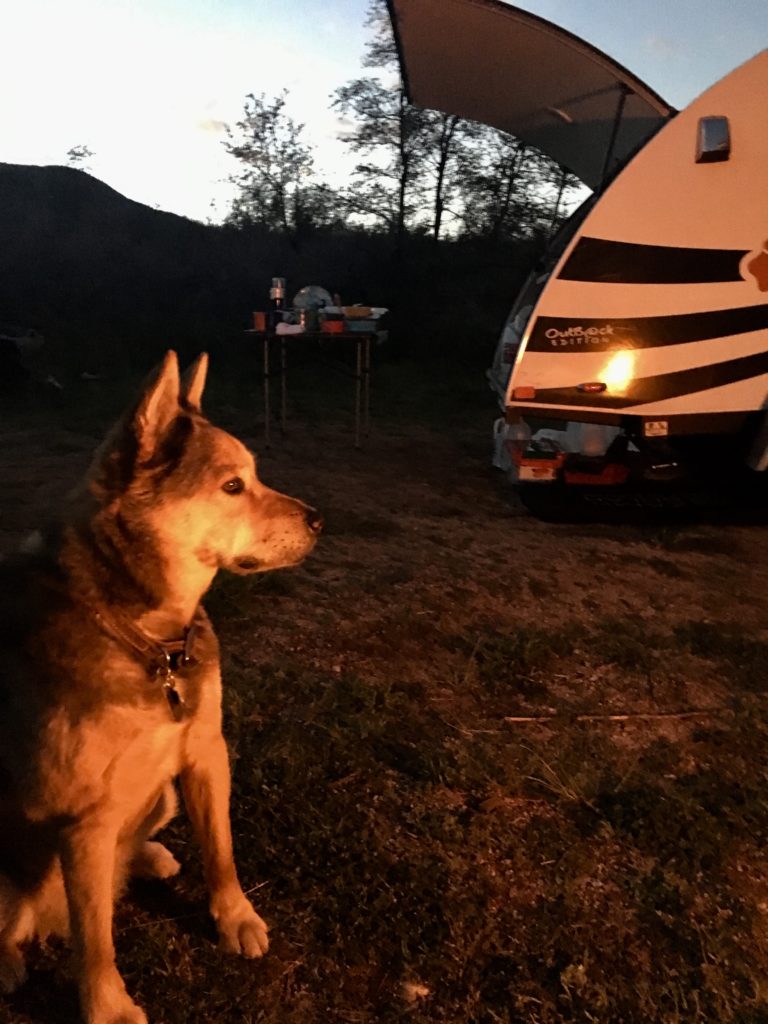
Remember, Fourth Grade, Senior, and National Park and Forest Service “Access” pass holders have free admission to all parks and national forests and only pay half of Day Fees and Camping Fees. The Access pass is $80/year.
Full price for Roosevelt Lake Day Pass is $12 or $18 with watercraft. Camping ranges from $12 to $20 nightly.
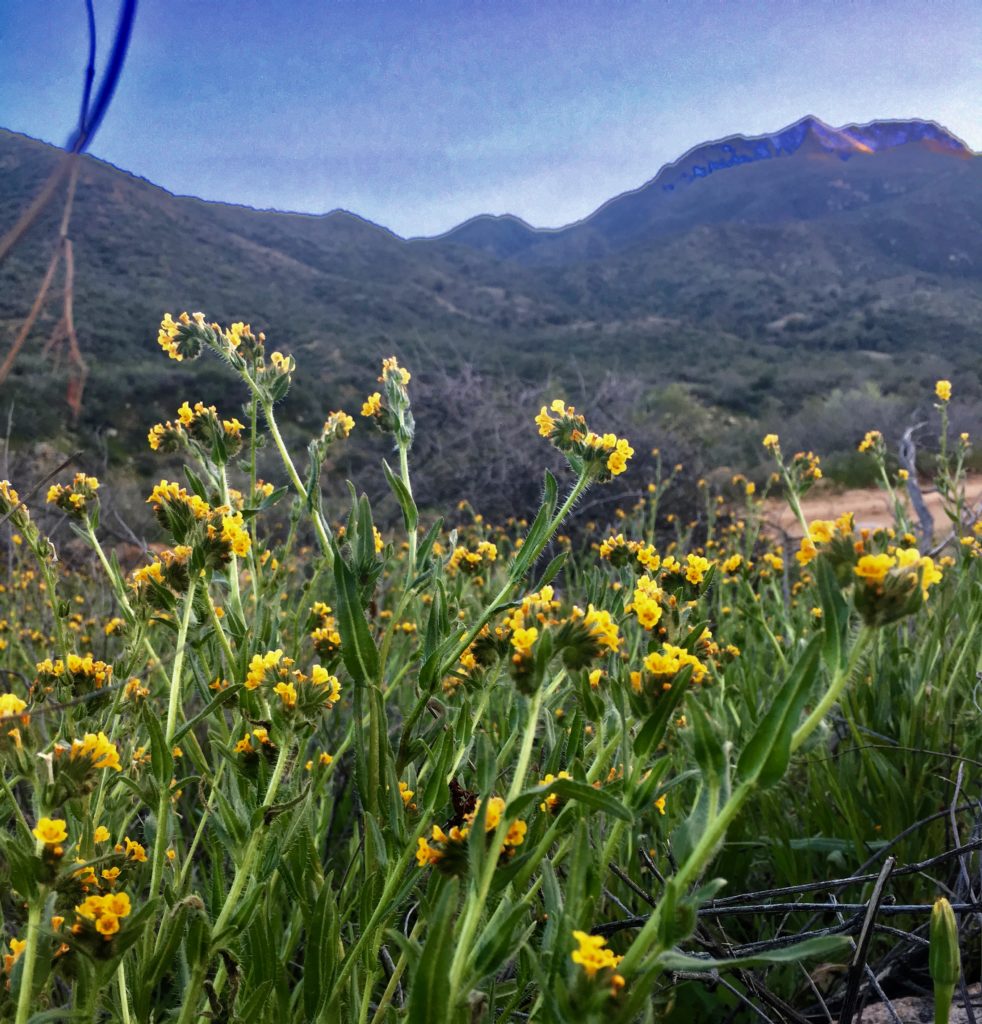
Services
The Marina grocery store has very limited groceries and water with an adjacent bar. There is one small restaurant with gas closer to Roosevelt. Cell service is very limited.
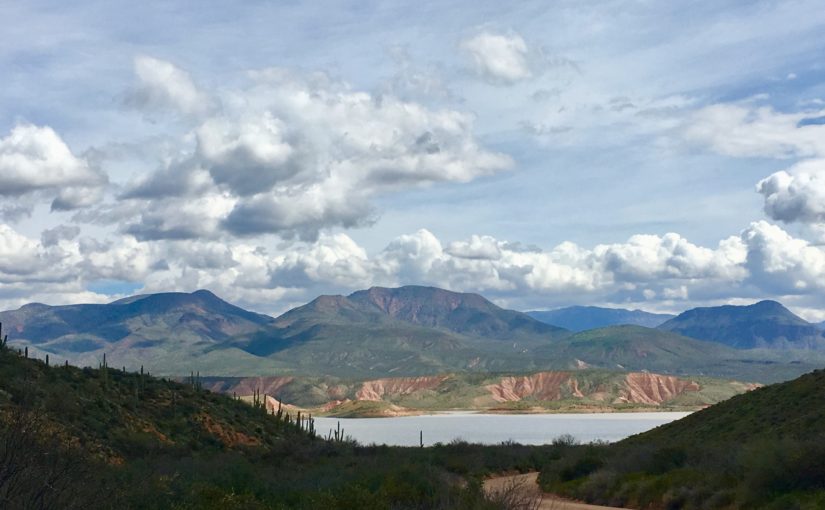
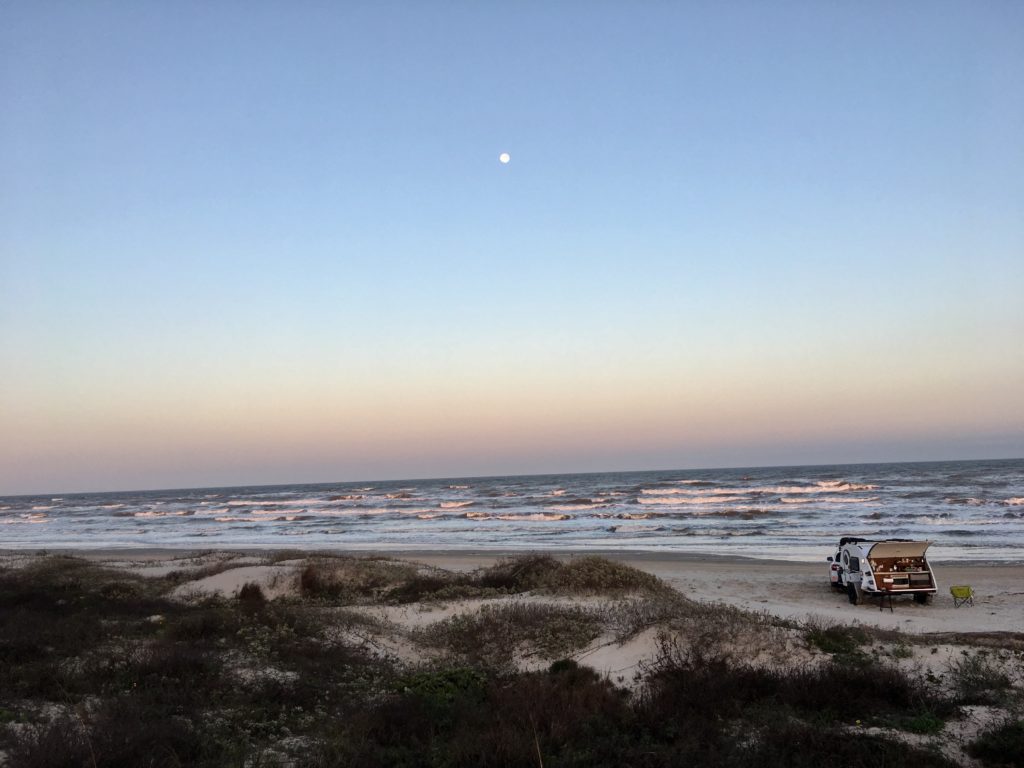
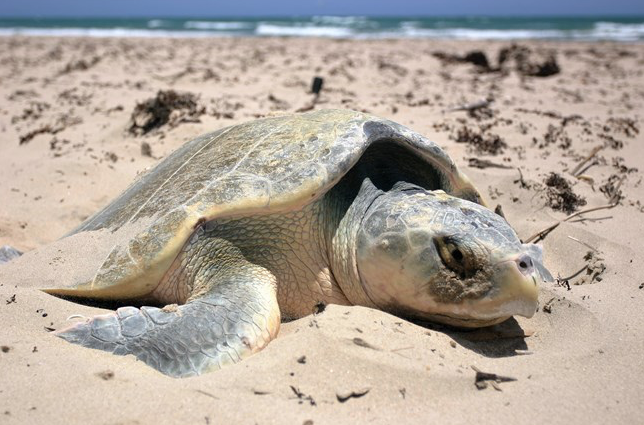
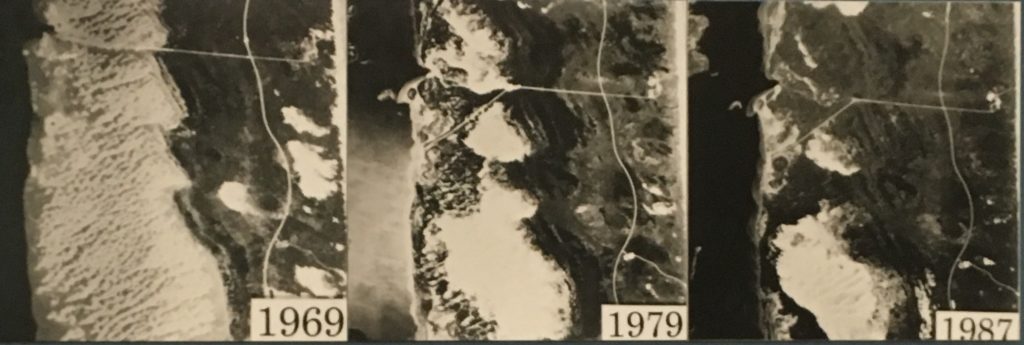
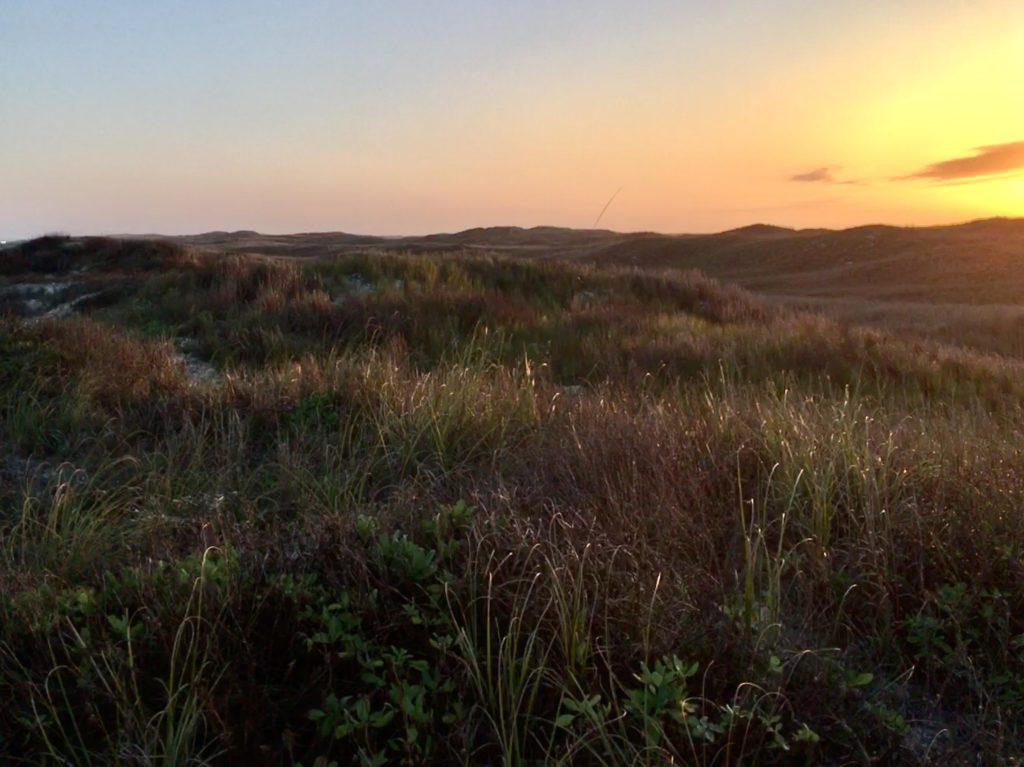
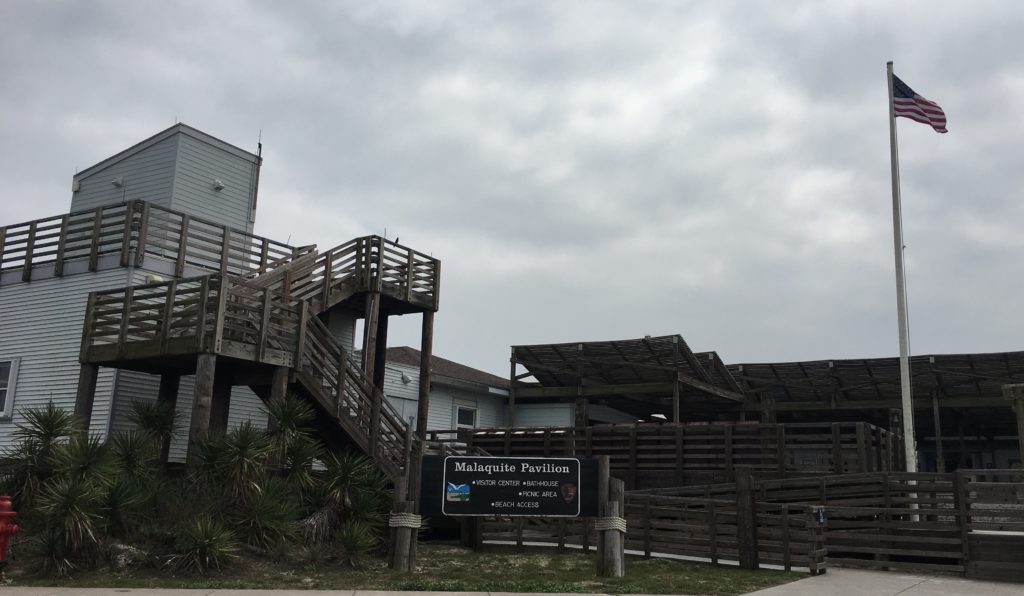
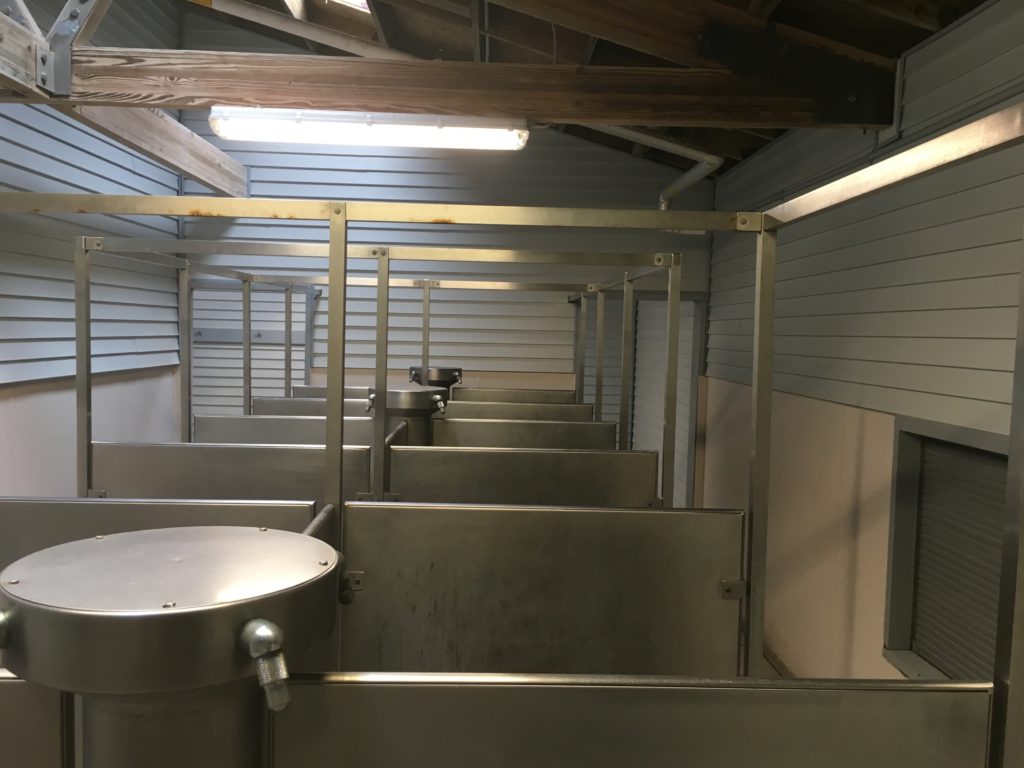
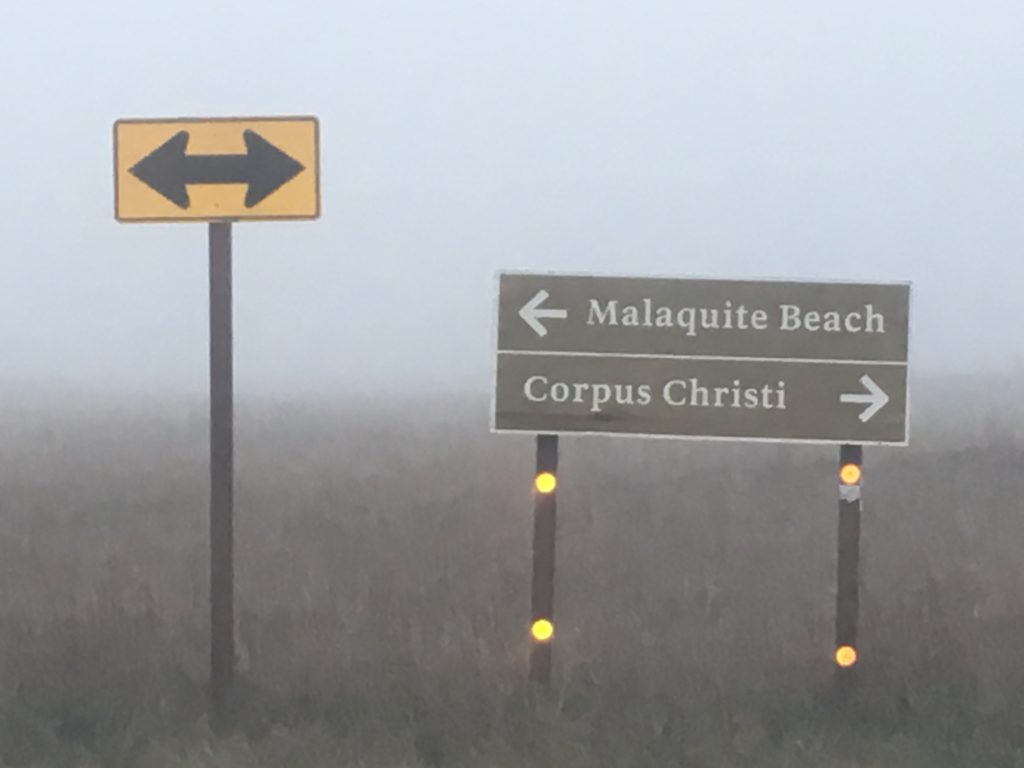
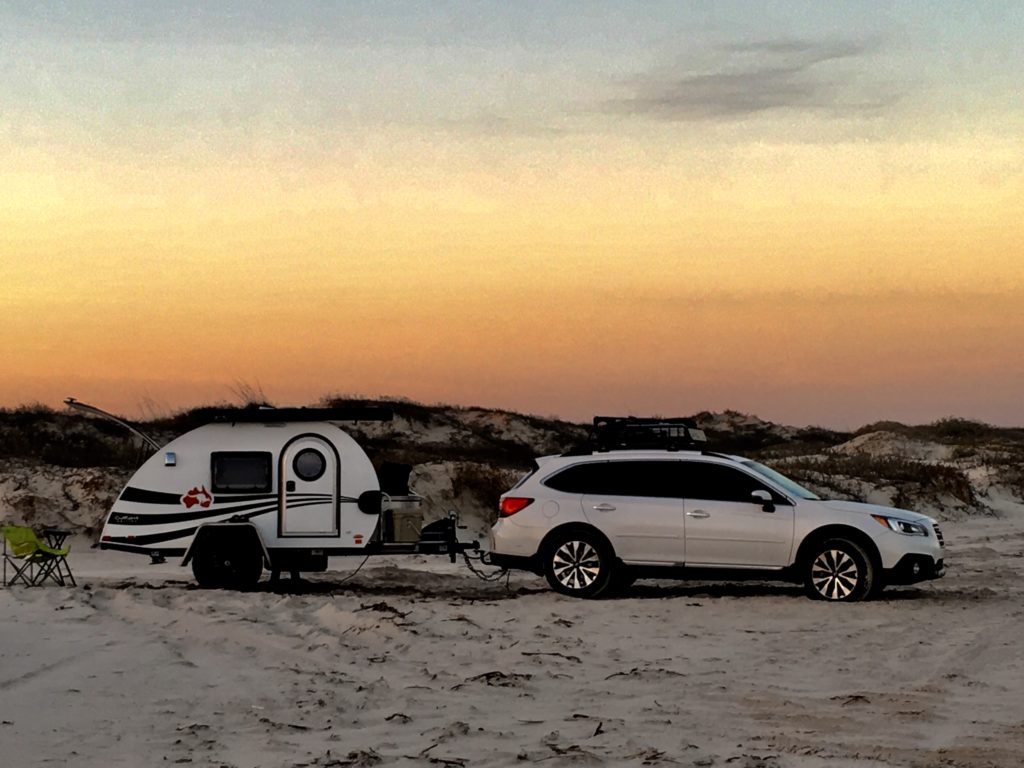
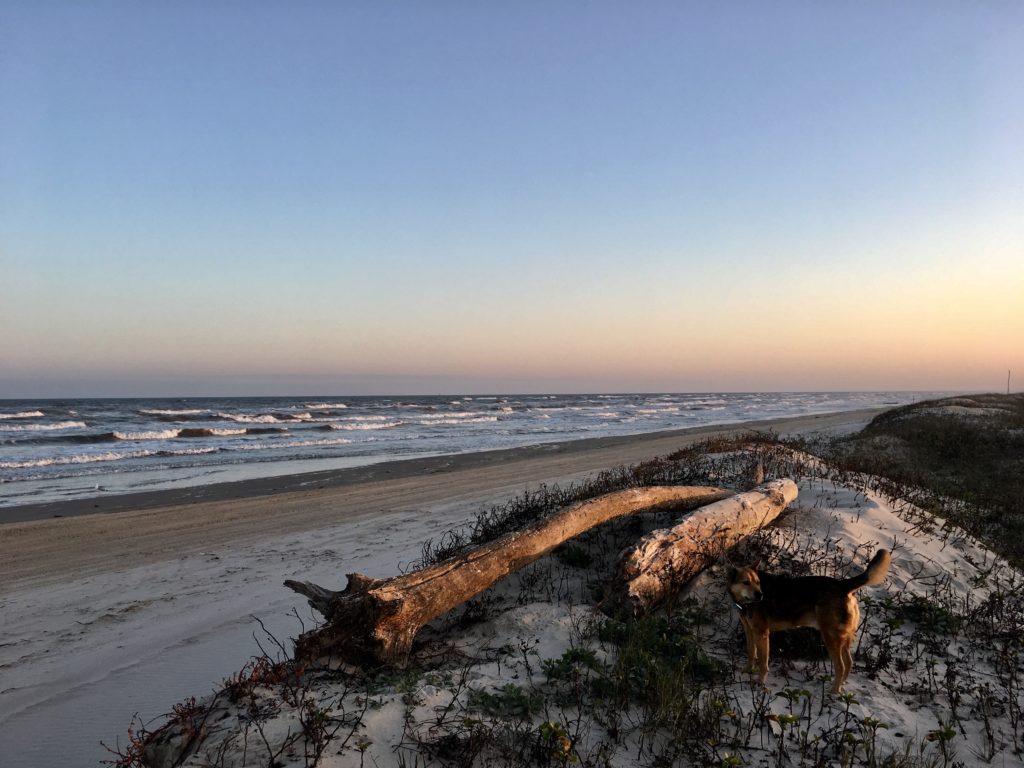
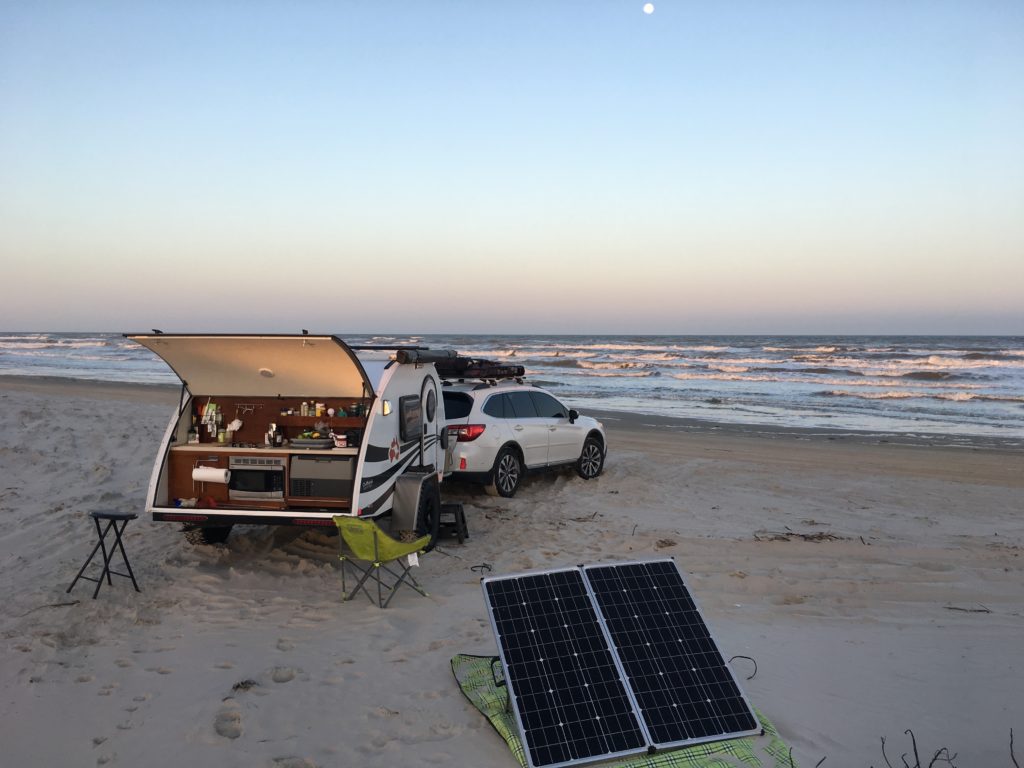
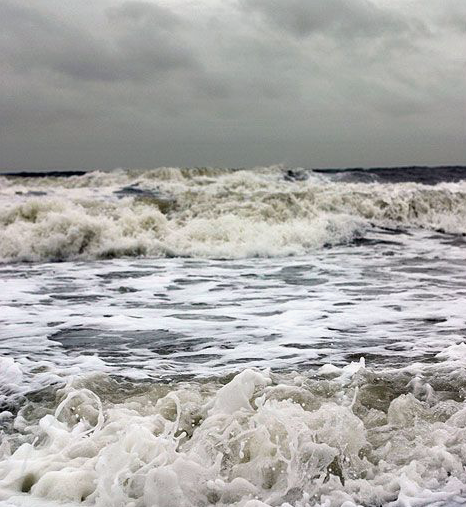
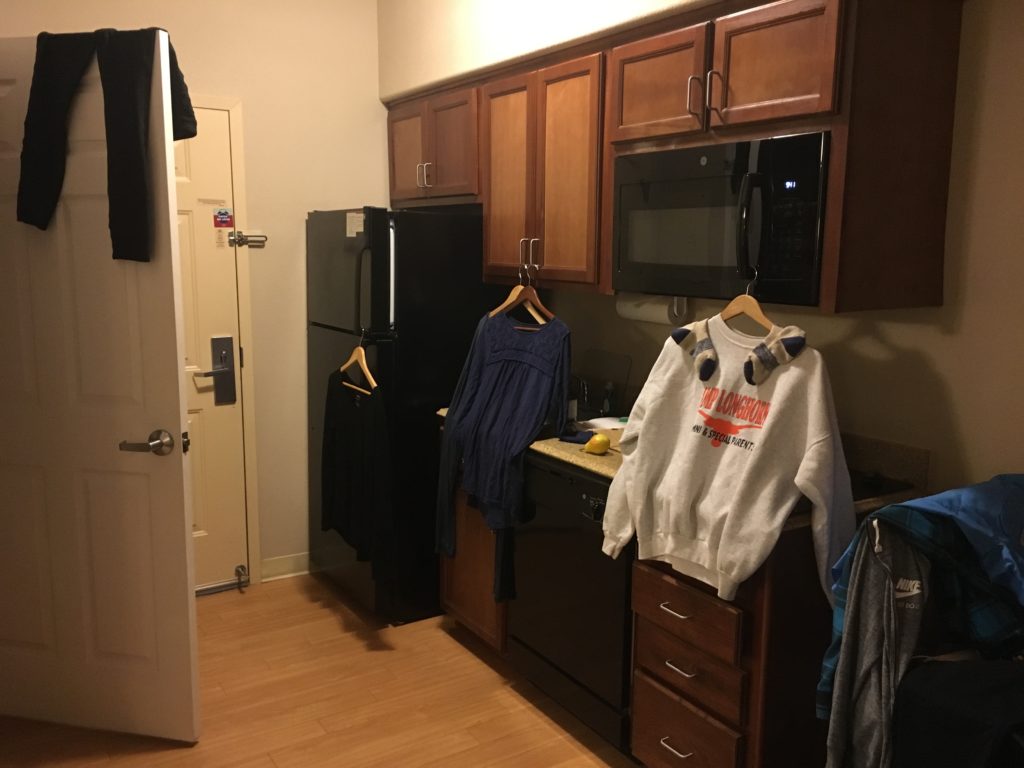

 The heart and soul of the Colorado Plateau in southern Utah is expressed through canyons, arches, spires, and mesas carved by the Green and Colorado Rivers.
The heart and soul of the Colorado Plateau in southern Utah is expressed through canyons, arches, spires, and mesas carved by the Green and Colorado Rivers.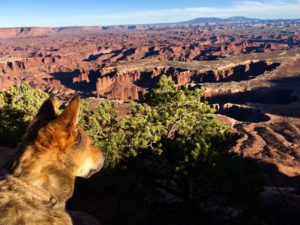 It’s almost impossible to wrap my mind around so much stunning beauty but it is as natural as breathing to allow all of that to become all of me. In my prayers and practices it also flows to each of you.
It’s almost impossible to wrap my mind around so much stunning beauty but it is as natural as breathing to allow all of that to become all of me. In my prayers and practices it also flows to each of you.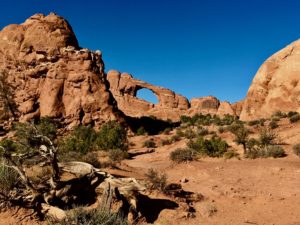 Inside both parks there is no food, gas, or other amenities. Each has one national parks campground.
Inside both parks there is no food, gas, or other amenities. Each has one national parks campground.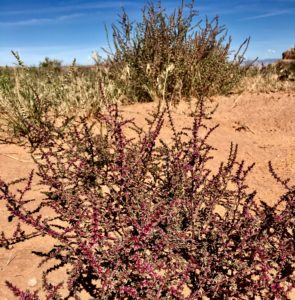 and animals still live in much of this remote, rugged, and wild countryside. Lots of folks call it “The American Wild West” but it’s been around much longer than we have and God willing will continue long after we’re gone.
and animals still live in much of this remote, rugged, and wild countryside. Lots of folks call it “The American Wild West” but it’s been around much longer than we have and God willing will continue long after we’re gone.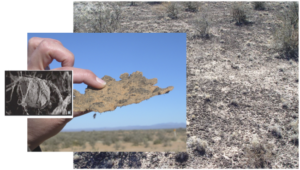
 A thin, fragile veneer of biological soil crushed by your footprints alone (compression) may require five to seven years to recover. Cyanobacterial growth can take 50 years and lichens/mosses even longer.
A thin, fragile veneer of biological soil crushed by your footprints alone (compression) may require five to seven years to recover. Cyanobacterial growth can take 50 years and lichens/mosses even longer.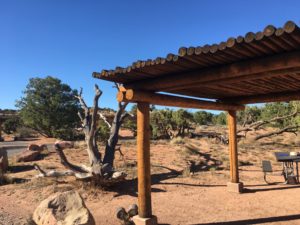
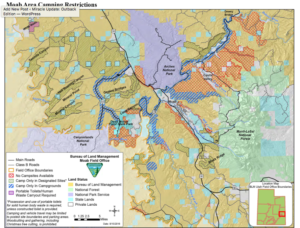
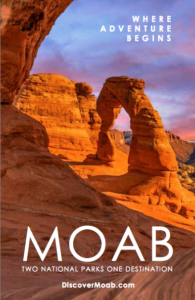
 The Moab BLM Field Office manages over two million visitors annually on 1.8 million acres in the heart of the Colorado Plateau.
The Moab BLM Field Office manages over two million visitors annually on 1.8 million acres in the heart of the Colorado Plateau. Weather can make unpaved roads impassable. Check with rangers for latest conditions.
Weather can make unpaved roads impassable. Check with rangers for latest conditions.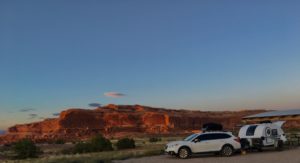 Lone Mesa Group Camp
Lone Mesa Group Camp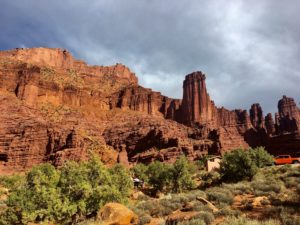
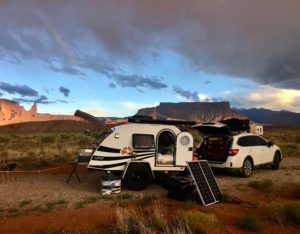
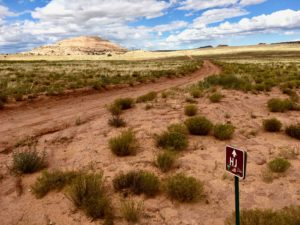
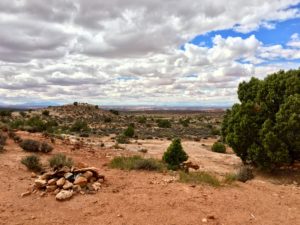

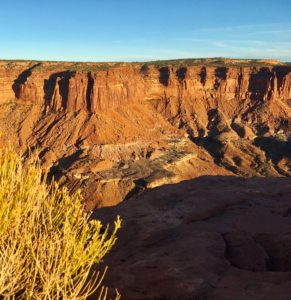 Hardscrabble – South of Hardscrabble Bottom
Hardscrabble – South of Hardscrabble Bottom Murphy Hogback – near Murphy Point trails
Murphy Hogback – near Murphy Point trails